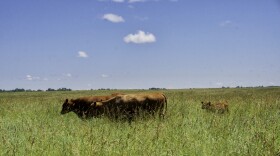-
The need for such research is urgent. Bacteria draining into recreational waters from overflowing wastewater treatment plants, livestock and poultry farms, and city streets and parking lots results in hundreds of beach closings annually across the five Great Lakes. Phosphorus running off farm fields and from big dairy, hog, and poultry operations causes harmful algal blooms in Lake Erie and other lakes across the region.
-
Michigan State’s Jason Rowntree is out to prove that ranching is an ecological asset.
-
A biological cure for contaminants in water is being studied.
-
Last summer, contaminated sludge from a fire at a chemical plant reached Lake Ontario. The spill report raises questions about what the government told the public.
-
The Michigan Supreme Court gave the state Department of Environment, Great Lakes, and Energy some disputed discretion in implementing rules on agricultural water pollution.
-
Hot summers do not end water shutoffs in some Great Lakes cities. When struggling people need water the most, it might not be available.
-
It's been ten years since Toledo issued a 'don not drink' order for its water system for three days due to cyanobacterial blooms near its water intake in Lake Erie. The blooms are not any worse, but they are not any less.
-
Indoor air quality can be directly affected by pollutants that originated outside, on top of the numerous air pollutants that original inside.
-
Hotter days make heat exhaustion a greater hazard for kids. Hotter days also can mean more ozone pollution and that leads to lung impairments. Unusual weather events, particularly storms that cause flooding, add stress to children's lives.
-
The Michigan Department of Natural Resources is using a couple of roving robots on tracks to sift through the sand on beaches, cleaning up debris.
Play Live Radio
Next Up:
0:00
0:00
Available On Air Stations











